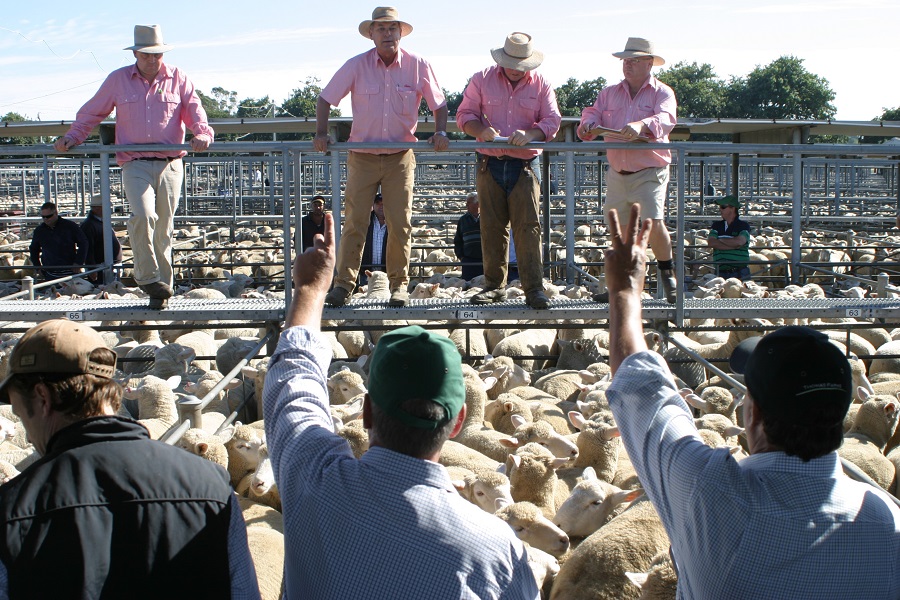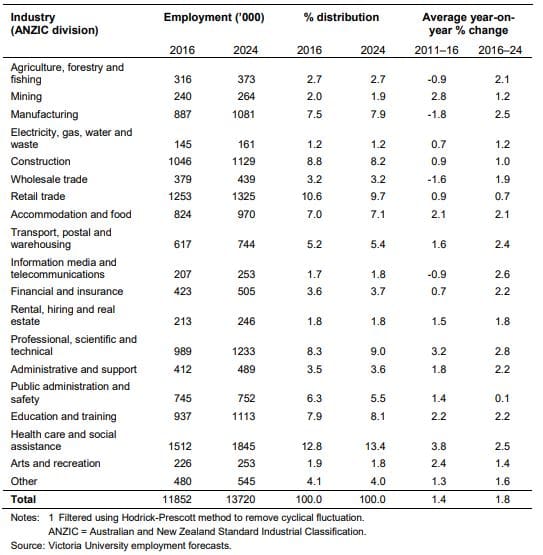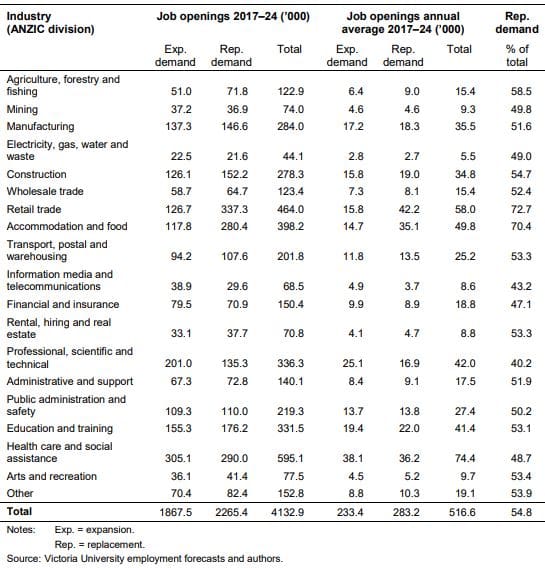Latest listings on Jobs Central:
- General Manager Farm Operations – (Hassad Australia)
- IVF Lab. & Field Technician – (Inventia Genetic Tech)
- IVF Field Technician – (Inventia Genetic Tech)
- Feedlot Administration – (Allied Beef)
- Office Manager (NT Cattlemens Association)
- Systems Analyst – (North Australian Pastoral Co)
- Barkly Landcare Coordinator
- Station Manager, Myroodah – (KAPCO)
- Stationhands – Channel Country – (Gibson Grazing)
- Butchery Manager – Papua New Guinea
- Organic beef sales & production rep – (OBE organic)
Click here to access these and other exciting meat and livestock supply chain jobs currently listed on Jobs Central.

EMPLOYMENT opportunities in agriculture are largely being driven by the replacement of older, retiring workers, moreso than the creation of new jobs, according to a recent report from the National Centre for Vocational Education Research.
The study, ‘Future job openings for new entrants by industry and occupation’, forecasts potential job openings across Australian industries and occupations for the period 2017 to 2024.
It found that in some occupations, such as agriculture, a high proportion of the job openings is due to replacement demand rather than employment growth.
“Replacement demand is high for occupations with relatively older workforces, a consequence of workers’ proximity to retirement. An example of high retirement-replacement demand includes farmers and farm managers, with 63.3 per cent of the 80,900 job openings (10,100 per year),” the report said.
The report found that across all employment sectors, the second highest number of job openings, 71,300 per year on average (570,600 in total), was for managers.
“Of these, construction, distribution and production managers had the highest number of job openings, with 10,500 per year (84,000 total), followed by farmers and farm managers, at 10,100 per year (80,900 total), with replacement demand the source of 53.8 per cent and 63.3pc of these, respectively.
“In 2016, about half ..(the farmers in Australia).. were 55 years or older, with a significant proportion over 70 years.”
“Of interest, farmers and farm managers have a much older workforce than most other occupations, which means it has a relatively higher replacement rate than other occupations.”
However, the report conceded that the suggested replacement rate for farm operators of 3.4pc compared to the national average of 2.2pc might be slightly overestimated, as many farmers continued working past the age of 70 years, the cut-off age in the study’s modelling for compulsory retirement.
“The age profile of farmers and farm managers is on average much older than the rest of the workforce. In 2016, about half of them were 55 years or older, with a significant proportion over 70 years.
“The model for replacement demand assumes all people retire at age 70 years. As a result, the replacement rate for farmers and farm managers, at 3.4pc, is much higher than the 2.2pc average across all occupations.
“As many farmers tend to continue working past the age of 70 years, this means that in this case our model will over-estimate the actual replacement rate for this occupation. Consequently, our forecasts of job openings for farmers and farm managers may, to a certain extent, be over-optimistic.”
The report showed employment continuing to shift towards higher-skill jobs in the Australian labour market, with a slight acceleration in this trend with higher productivity growth.
In most occupations, replacement demand contributes more to job openings than does expansion demand.
It suggested employment in industries such as agriculture would benefit from the lower value of the Australian dollar relative to the currencies of Australia’s major trading partners and expanding export opportunities through free trade agreements (FTA) with countries in East Asia.

Table 1: Employment by industry (division), Australia, 2016 (actual) and 2024 (forecast):
most likely scenario. Click image for a larger view.
The research report from the National Centre for Vocational Education Research, ‘Future job openings for new entrants by industry and occupation’, was authored by:
Chandra Shah, Affiliate, Faculty of Education, Monash University, and Adjunct Associate Professor, Centre for International Research on Education Systems, Victoria University.
Janine Dixon, Centre of Policy Studies, Victoria University.




HAVE YOUR SAY